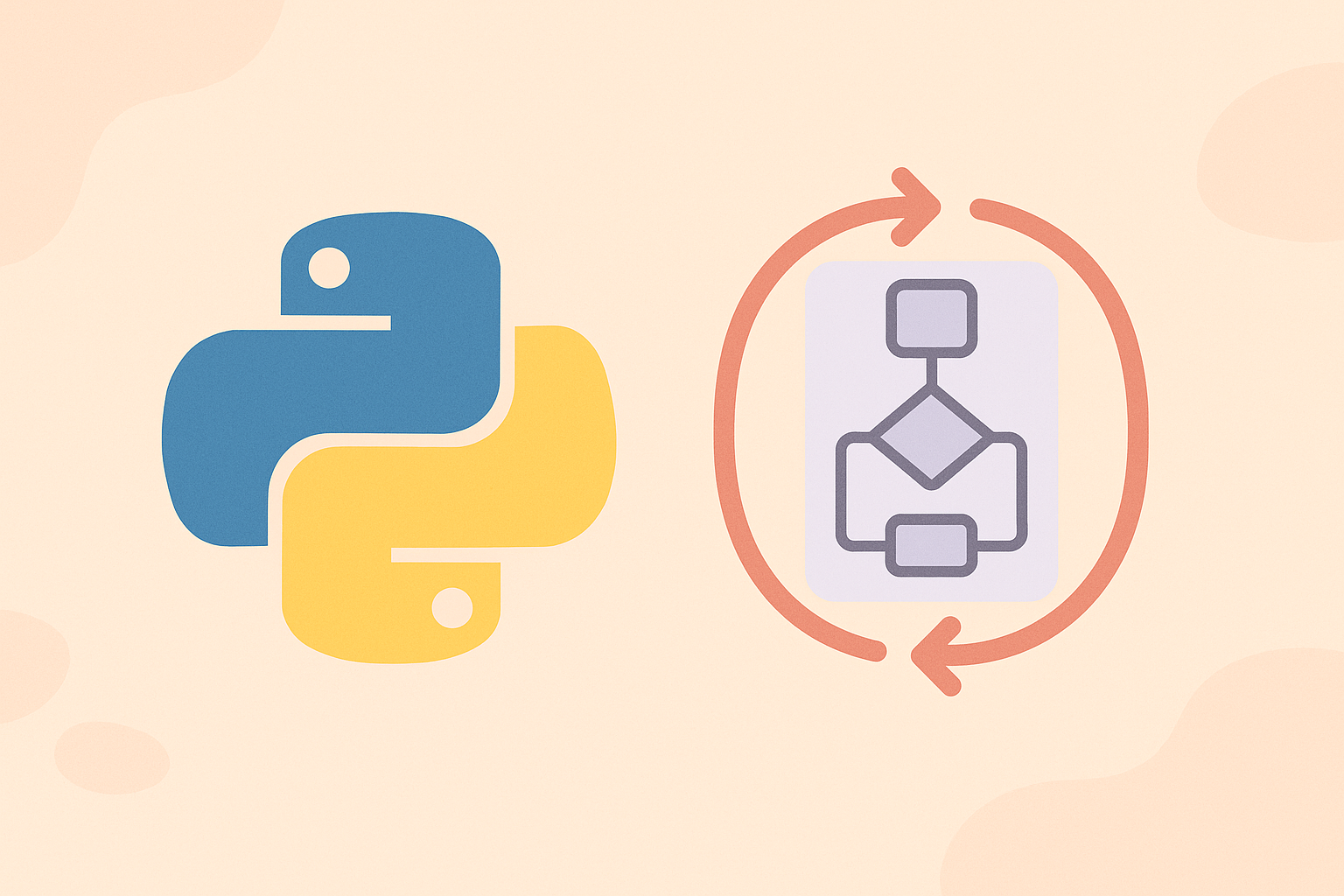Recursion in Python is one of the most fundamental concepts that every programmer should understand. A recursive function is a function that calls itself to solve smaller subproblems of a larger problem. In this article, you’ll learn the basics of recursion, how it works, and explore several practical Python recursion examples with code and detailed explanations.

What Is Recursion in Python?
Recursion happens when a function calls itself inside its own body. It’s a common approach for solving problems that can be broken down into smaller, repetitive subproblems. A recursive function must have two main parts:
- Base Case: The condition that stops the recursion.
- Recursive Case: The part where the function calls itself.
Here’s a simple example of a recursive function that counts down from a given number:
def countdown(n):
if n <= 0:
print("Blast off!")
else:
print(n)
countdown(n - 1)
countdown(5)
Output:
5 4 3 2 1 Blast off!
Example 1: Recursive Factorial Function
Factorial is one of the most classic examples of recursion. The factorial of a number (n!) is defined as n × (n-1) × (n-2) × … × 1. Using recursion, we can easily define this in Python:
def factorial(n):
if n == 1:
return 1
else:
return n * factorial(n - 1)
print(factorial(5))
Output:
120
Explanation:
The recursive function keeps calling itself until n == 1. At that point, it returns 1, and all the previous calls multiply their results together.
Example 2: Fibonacci Series Using Recursion
The Fibonacci sequence is another famous example of recursion. The series starts from 0 and 1, and every next number is the sum of the two previous numbers.
def fibonacci(n):
if n <= 1:
return n
else:
return fibonacci(n - 1) + fibonacci(n - 2)
for i in range(10):
print(fibonacci(i), end=" ")
Output:
0 1 1 2 3 5 8 13 21 34
Explanation:
When fibonacci(n) is called, it recursively adds the two previous numbers until reaching the base case (n <= 1).
Example 3: Sum of Natural Numbers
Recursion can also be used to calculate the sum of natural numbers up to n. This problem is simple but demonstrates how recursion works in reducing the problem size with each call.
def sum_natural(n):
if n == 0:
return 0
else:
return n + sum_natural(n - 1)
print(sum_natural(10))
Output:
55
This example shows that each recursive call adds n until it reaches the base case (n == 0).
Example 4: Reverse a String Using Recursion
String manipulation can also be achieved using recursion. Let’s reverse a string recursively:
def reverse_string(s):
if len(s) == 0:
return s
else:
return reverse_string(s[1:]) + s[0]
print(reverse_string("python"))
Output:
nohtyp
Each recursive call moves the first character to the end until the string becomes empty.
Example 5: Recursive Directory Traversal
Recursion is often used for navigating nested structures, such as directories or trees. Here’s an example that lists all files and folders in a directory recursively:
import os
def list_files(path):
for item in os.listdir(path):
full_path = os.path.join(path, item)
if os.path.isdir(full_path):
list_files(full_path)
else:
print(full_path)
# Example usage:
list_files(".")
Explanation:
The function checks if an item is a directory or a file. If it’s a directory, it calls itself recursively to explore deeper folders.
When to Use Recursion
Recursion is a powerful concept, but it should be used wisely. Each recursive call adds a new frame to the call stack, so too many recursive calls can lead to a RecursionError. Use recursion when:
- The problem can be divided into smaller, similar subproblems.
- A clear base case can be defined.
- Iterative solutions are less intuitive or more complex.
Tips to Avoid Recursion Errors
- Always define a base case to stop recursion.
- Use tail recursion optimization where possible.
- Limit the recursion depth with
sys.setrecursionlimit()if necessary.
Conclusion
Recursion is an essential topic in Python programming that helps in solving complex problems elegantly. By practicing these Python recursion examples, you’ll gain a solid understanding of how recursion works and when to use it effectively. Whether it’s computing factorials, generating Fibonacci numbers, or reversing strings, recursion can make your code more readable and efficient when used properly.

